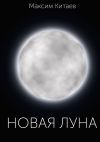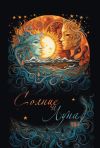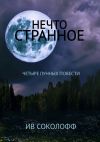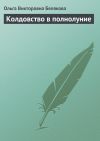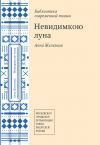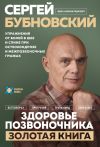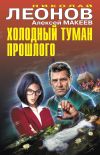Текст книги "Луна. История будущего"
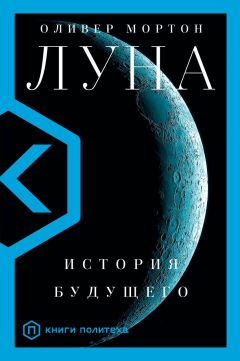
Автор книги: Оливер Мортон
Жанр: Прочая образовательная литература, Наука и Образование
Возрастные ограничения: +12
сообщить о неприемлемом содержимом
Текущая страница: 20 (всего у книги 20 страниц)
Источники и дополнительная литература
Приводимые в этом разделе заметки дают краткий обзор вошедших в список литературы книг и статей, из которых вы сможете больше узнать о темах, затронутых в главах настоящей книги. Ряд книг, упоминавшихся в тексте, в заметках не упомянут.
Луна в целом
На мой взгляд, покойный Пол Спудис сделал больше остальных, чтобы доказать важность Возвращения на Луну; его аргументы приводятся в книгах Spudis (1996) и Spudis (2016). Что касается прошлого, Скотт Монтгомери прекрасно описывает историю созерцания Луны с древних времен до XVII века в работе Montgomery (1999). Книги о программе “Аполлон” перечислены в заметках к главе III. Чтобы изучить старые проекты лунных кораблей, обратитесь к работе Godwin (2008), а чтобы познакомиться с мифами и фольклором – к работе Cashford (2003).
Я впервые разглядел Луну в деталях, прочитав книгу Lewis (1969). Также рекомендую сайт со снимками, сделанными Лунным орбитальным разведчиком: http://lroc.sese.asu.edu/. Впервые я облетел ее с доктором Дулиттлом и доктором Каргрейвзом из книг Lofting (1928) и Heinlein (1947).
Введение
В поезде я читал статью Wingo (2016).
Глава 1
Французские наблюдения пепельного света описаны в работе Arnold et al. (2002), а наблюдения, сделанные в Аризоне, – в работе Woolf et al. (2002); последующее развитие тема получила в работе Sterzick et al. (2011). Оригинальные наблюдения Лавлока о жизни и химическом неравновесии атмосферы описаны в работе Lovelock (1979). О вторичном характере пепельного света и его использовании как довода в поддержку коперниканства захватывающе пишет Reeves (1997), а связь между коперниканством и верой в наличие жизни на других планетах (или в других мирах) стала главной темой работы Dick (1984). История проекта “Диана” излагается в работе Butrica (1997), о происхождении спутников связи пишет Clarke (1946), а об использовании стэнфордской тарелки в разведывательных целях – Perry (2015). Расшифровка переговоров астронавтов “Аполлона-8” предоставлена NASA (1969). Наиболее полный анализ “Восхода Земли” содержится в работе Poole (2008), а анализ “2001: Космической одиссеи” Кубрика и Кларка – в работе Benson (2018).
Глава 2
Montgomery (1999) чудесно и содержательно описывает первые изображения Луны и подробнее останавливается на творчестве ван Эйка. Уитакер приводит исчерпывающий список лунных карт, но истинным любителям жанра стоит также обратиться к работе Kopal and Carder (1974). Pumfrey (2011) поясняет, какой вклад внес Гильберт и какие цели преследовал. В работе Roberts (2016) содержится превосходный обзор ранней научной фантастики и других образчиков жанра; большее внимание лунным мотивам уделяет Bennett (1983). Об истории райских островов, экологии и фантазиях пишет Grove (1995). О Несмите можно больше узнать из работ Nasmyth and Carpenter (1871), Nasmyth (1882) и Robertson (2006). Медленное становление теории об ударном формировании Луны описано в работах Marvin (1986) и Koeberl (2001), а ее последующее развитие – в работе Wilhelms (1993). Сведения о Хартманне получены от самого Билла, а также из работы Hartmann (1981). Лучший обзор снимков Луны, сделанных на ее поверхности (и не только), приводится в работе Light (1999).
Глава 3
Если сложить книги о программе “Аполлон” друг на друга, по высоте стопка сможет сравниться с “Сатурном-5”. Я особенно рекомендую работы Chaikin (1995) об истории проекта в целом, Collins (1974) о пребывании на Луне, Cox and Murray (1990) об осуществлении программы, Logsdon (2013) о политике, Mailer (1971) о самоуверенности и Wilhelms (1993) о геологии как способе производства. Также при подготовке этой главы очень полезными оказались работы Harland (2008), Launius (1994), McDonald (2017) и – особенно для описания запуска – Woods (2016). Рекомендую также великолепные работы Scott and Jurek (2014) и Scott (2017), которые использовались в меньшей степени. Расшифровка разговоров на поверхности взята из работы Jones and Glover (публикация продолжается), которая служит поистине замечательным ресурсом наряду с работой Woods with others (публикация продолжается). Ранняя история космических полетов изложена в работе McDougall (1985), а связи между ракетостроением и научной фантастикой обсуждаются в работе Carter (1974), откуда я взял слова Оберта. О Хайнлайне в Голливуде пишет Patterson (2016), а прекрасное введение в мир американской научной фантастики середины XX века содержится в работе Nevala-Lee (2018). Day (2007) хорошо описывает планы создания военной базы на Луне. Восхитительные лунные иллюстрации Боунстелла содержатся в работе Richardson (1961), которая помогает понять, что было известно о Луне до запуска программы “Аполлон”. О лунных модулях пишут Kelly (2001) и Riley (2009); скафандрам посвящена великолепная и многослойная работа De Monchaux (2011), а также работа St Clair (2018); о тренажерах можно почитать у Mindell (2008). О чернокожих астронавтах пишет Logsdon (2014). Лунофагия подруги Даны Собел описана в работе Sobel (2005). О причастии Базза Олдрина пишет Chaikin (1995).
Глава 4
Политический и социальный контекст периода действия программы “Аполлон” и первых лет после ее закрытия подробно описывает Maher (2015). Краткий обзор антропоцена и дискуссий о времени его начала приводят Lewis and Maslin (2018), а его влияние на гуманитарные науки рассматривает Chakrabarty (2009). Дэвид Гринспун связывает антропоцен с Базой Спокойствия в работе Grinspoon (2016); более широкий взгляд на необходимость расширения антропоцена за пределы Земли можно найти в работе Olson and Messeri (2015). Периодизация эона хаоса и катархейского эона на заре существования Солнечной системы приводится в работе Goldblatt et al. (2010). О моменте столкновения пишут von Trier (2011) и Asphaug (2014), причем в последней работе приводится обзор развития теории о гигантском столкновении и перечисляются вопросы, ответы на которые еще не найдены. О синестии пишут Lock and Stewart (2017) и Lock et al. (2018). О необходимости Луны – Brownlee and Ward (2000) и Waltham (2016). Объективную оценку достоинств теории о поздней тяжелой бомбардировке проводят Bottke and Norman (2017). Идея о том, что лучше покинуть планету, чем испытывать на себе последствия крупного столкновения, позаимствована из работы Sleep and Zahnle (1998). О “чердаке Земли” читайте в работе Armstrong, Wells and Gonzales (2002).
Глава 5
Документальный фильм о сиротах “Аполлона” снял Potter (2008); чтобы понять, каково быть таким сиротой, рекомендую прочесть работу Klerkx (2004). Чтобы лучше познакомиться с идеями О’Нила, читайте работы O’Neill (1976), Brand (1977) и McCray (2012). О концепции космического изобилия пишет Pournelle (1981), а о ее связи с военно-промышленным комплексом – Westwick (2018). Высказывание Хайдеггера о Луне как конце света позаимствовано из работы Lazier (2011). Tumlinson with Medlicott (2005) перечисляют множество причин и планов Возвращения; Spudis (1996) обсуждает добычу гелия-3; Деннис Уинго приводит доводы в пользу добычи платины на Луне в работе Wingo (2004); а National Academy of Sciences (2007) и Lunar Exploration Analysis Group (2016) дают научное обоснование Возвращения. Идея об Америке как втором творении анализируется в работе Nye (2003).
Глава 6
Цитата из The Saturday Review позаимствована из работы Barnouw (1970). О достижениях и личности Илона Маска пишет Vance (2015), а последний вариант инфраструктуры для многопланетного вида (который, вероятно, будет пересмотрен к тому времени, когда вы это прочитаете) описывает Musk (2018). Предложения Роберта Зубрина в отношении Луны излагаются в работе Zubrin (2018). Miller et al. (2015) увлекательно анализируют государственно-частное Возвращение на Луну.
Глава 7
Вариация концепции BOLAS описана в работе Stubbs et al. (2018); а привлекательность борозд Боде – в работе Spudis and Richards (2018). О лавовых трубках пишут Chappaz et al. (2017) и Kaku et al. (2017). Lockwood (2007) рассматривает проблему радиации и другие риски. Замечательный обзор юридических проблем, связанных с пиками вечного света, делают Elvis, Milligan and Krolikowski (2016). Почти никто не упоминает о беременности.
Глава 8
Роман “Луна – суровая хозяйка” любопытным образом анализируют Franklin (1980), Davies (2018) и Mendelsohn (2019), хотя мой анализ не во всем соотносится с их представлениями. Baxter (2015) приводит полезный и глубокий обзор политики в лунной научной фантастике. Чарльз Кокелл привлекает внимание мира, который редко задумывается о подобных вещах, к проблеме внеземной свободы в работах Cockell (2008, 2009, 2010), а также резюмирует чужие взгляды в работах Cockell (2015a, 2015b, 2016). Экологическая тенденция в истории прослеживается среди прочего в работах Davis (2000), Wood (2014) и Parker (2014). Концепция Мэри Дуглас о загрязнении описана в работе Douglas (1966). Рекомендую работу Damjanov (2013) всем, кто интересуется призраками Луны: в ней находится место и призракологии, и гетеротропии. Теория о лунной асимметрии из-за яркого пепельного света изложена в работе Roy et al. (2014). Silk (2018) приводит доводы в поддержку установки радиотелескопа на обратной стороне Луны. Обзор возможностей для полетов к звездам можно найти в работе Lubin (2016), а последнюю информацию о Breakthrough Initiative – на сайте проекта (http://breakthroughinitiatives.org/initiative/3).
Кода
В те дни я писал статью Morton (2016). Фрагменты статьи для Newsweek International вошли в работу Morton (1999). Майка Эллиотта тепло вспоминает Franklin (2016). Той ночью вместе со мной за запуском и посадкой среди прочих наблюдали Джефф Фоуст (@Jeff_Foust) из Space News и Лорен Граш (@lorengrush) из The Verge. Если вы хотите оставаться в курсе новостей о космосе, более полезных твиттер-каналов не найти.
Рекомендации научного редактора по дополнительному чтению
Куликов К. А., Гуревич В. Б. Новый облик старой Луны. М.: Наука, 1974
Шевченко В. В. Луна и ее наблюдение. М.: Наука, 1983
Бронштэн В. А. Как движется Луна? М.: Наука, 1990
Голованов Я. Правда о программе Apollo: битва за Луну. М.: Эксмо, 2000
Луна – шаг к технологиям освоения Солнечной системы. Под ред. В. П. Легостаева и В. А. Лопоты. М.: РКК “Энергия”, 2011
Путешествия к Луне. Ред. – сост. В. Г. Сурдин. 4-е изд. М.: Физматлит, 2019
Шубин П. Луна. История, люди, техника. М.: АСТ, 2019
В указанных книгах также содержится обширная библиография.
Библиография
Arendt, Hannah. (2007). “The conquest of space and the stature of man”. New Atlantis, 2007. (Original work published 1963)
Armstrong, John C., Wells, Llyd E., and Gonzalez, Guillermo. (2002). “Rummaging through Earth’s attic for remains of ancient life”. Icarus 160:183–196.
Arnold, L., Gillet, S., Lardiere, O., Riaud, P., Schneider, J. (2002). “A test for the search for life on extrasolar planets: Looking for the terrestrial vegetation signature in the Earthshine spectrum”. Astronomy & Astrophysics 392:231–237.
Asimov, Isaac. (1972). “The tragedy of the Moon”. Magazine of Fantasy and Science Fiction, July.
Asphaug, Erik. (2014). “Impact origin of the Moon?” Annual Review of Earth and Planetary Sciences 42:551–578.
Baldwin, Ralph Belknap. (1949). The Face of the Moon. University of Chicago Press. Barnouw, Eric. (1970). The Image Empire. (A History of Broadcasting in the United States, Volume III). Oxford University Press.
Baxter, Stephen. (2015). “The birth of a new republic: Depictions of the governance of a free Moon in science fiction”. In Cockell, C. (ed.), Human Governance Beyond Earth: Implications for Freedom. Springer.
Bear, Greg. (1990). Heads. Orbit.
Behn, Aphra. (1687). “The emperor of the Moon”. In The Works of Aphra Behn, Volume III.
Bennett, Maurice J. (1983). “Edgar Allen Poe and the literary tradition of lunar speculation”. Science-Fiction Studies 10:137–147.
Benson, Michael. (2018). Space Odyssey: Stanley Kubrick, Arthur C. Clarke, and the Making of a Masterpiece. Simon & Schuster.
Bottke, William F., Norman, Marc D. (2017). “The Late Heavy Bombardment”. Annual Review of Earth and Planetary Sciences 45:619–647.
Bova, Ben. (1976). Millennium: A Novel About People and Politics in the Year 1999. Random House.
Bova, Ben. (1978). Colony. Pocket Books.
Boyle, Colleen. (2013). “You saw the whole of the Moon: The role of imagination in the perceptual construction of the Moon”. LEONARDO, 46:246–252.
Brand, Stewart (ed.). (1977). Space Colonies. Whole Earth Catalogue Press.
Brownlee, Donald, Ward, Peter. (2000). Rare Earth: Why Complex Life Is Uncommon in the Universe. Copernicus.
Butrica, Andrew J. (1997). To See the Unseen: A History of Planetary Radar Astronomy. NASA.
Carter, Paul A. (1974). “Rockets to the Moon, 1919–1944: A dialogue between fiction and reality”. American Studies 15:31–46.
Cashford, Jules. (2003). The Moon: Myth and Image. Octopus.
Chaikin, Andrew. (1995). A Man on the Moon: The Voyages of the Apollo Astronauts. Penguin.
Chakrabarty, Dipesh. (2009). “The climate of history: Four theses”. Critical Inquiry 35:197–222.
Chappaz, L., Sood, Rohan, Melosh, Henry J., Howell, Kathleen C., Blair, David M., Milbury, Colleen, Zuber, Maria T. (2017). “Evidence of large empty lava tubes on the Moon using GRAIL gravity”. Geophysical Research Letters 44. doi:10.1002/2016GL071588.
Clarke, Arthur C. (1945). “Extra-terrestrial relays”. Wireless World, October, 305–308.
Clarke, Arthur C. (1946). “The challenge of the spaceship”. Journal of the British Interplanetary Society 6:66–78.
Clarke, Arthur C. (1951a). Prelude to Space. World Editions.
Clarke, Arthur C. (1951b). “The sentinel”. 10 Story Fantasy, Spring. (as “Sentinel of eternity”)
Clarke, Arthur C. (1955). Earthlight. Ballantine Books.
Clarke, Arthur C. (1961). A Fall of Moondust. Gollancz.
Clarke, Arthur C. (1968). 2001: A Space Odyssey. Hutchinson.
Cockell, Charles. (2008). “An essay on extraterrestrial liberty”. Journal of the British Interplanetary Society 61:255–275.
Cockell, Charles. (2009). “Liberty and the limits to the extraterrestrial state”. Journal of the British Interplanetary Society 62:139–157.
Cockell, Charles. (2010). “Essay on the causes and consequences of extraterrestrial tyranny”. Journal of the British Interplanetary Society 63:15–37.
Cockell, Charles (ed.). (2015a). Human Governance Beyond Earth: Implications for Freedom. Springer.
Cockell, Charles (ed.). (2015b). The Meaning of Human Liberty Beyond Earth. Springer.
Cockell, Charles (ed.). (2016). Dissent, Revolution and Liberty Beyond Earth. Springer.
Collins, Michael. (1974). Carrying the Fire: An Astronaut’s Journeys. Cooper Square Press.
Commoner, Barry. (1971). The Closing Circle: Man, Nature and Technology. Knopf.
Cox, Catherine Bly, Murray, Charles C. (1990). Apollo: Race to the Moon. Touchstone Books.
Crawford, Ian, Joy, Katherine H. (2014). “Lunar exploration: Opening a window into the history and evolution of the inner solar system”.
Philosophical Transactions of the Royal Society A 372. doi:10.1098 /rsta.2013.0315.
Damjanov, Katarina. (2013). “Lunar cemetery: Global heterotropia and the biopolitics of death”. Leonardo 46:159–162.
Davies, William (ed.). (2018). Economic Science Fictions. Goldsmiths Press.
Davis, Mike. (2000). Late Victorian Holocausts: El Niсo Famines and the Making of the Third World. Verso.
Day, Dwayne A. (2007). “Take off and nuke the site from orbit. (It’s the only way to be sure…)”. Space Review, June 4th.
De Monchaux, Nicholas. (2011). Spacesuit: Fashioning Apollo. MIT Press.
Dick, Steven J. (1984). Plurality of Worlds. The Origins of the Extraterrestrial Life Debate from Democritus to Kant. Cambridge University Press.
Doctorow, Cory. (2014). “The man who sold the Moon”. In Finn, Ed, Cramer, Kathryn (eds.), Hieroglyph: Stories and Visions for a Better Future. William Morrow.
Douglas, Mary. (1966). Purity and Danger: An Analysis of Concepts of Pollution and Taboo. Routledge and Keegan Paul.
Elvis, Martin, Milligan, Tony, Krolikowski, Alanna. (2016). “The Peaks of Eternal Light: A near-term property issue on the Moon”. Space Policy 38:30–38.
Franklin, Daniel. (2016). “The fab one”. The Economist, July 21st.
Franklin, H. Bruce. (1980). Robert A Heinlein: America as Science Fiction. Oxford University Press.
Galilei, Galileo. (1610). Sidereus Nuncius.
Gilbert, Grove Karl. (1898). “The Moon’s face: A study of the origin of its features”. Bulletin of the Philosophical Society of Washington, January.
Godwin, Francis. (1638). The Man in the Moone or the Discourse of a Voyage thither by Domingo Gonsales.
Godwin, Robert. (2008). The Lunar Exploration Scrapbook: A Pictorial History of Lunar Vehicles. Apogee Books.
Goldblatt, C., Zahnie, K. J., Sleep, Norma H., Nisbet, E. G. (2010). “The eons of Chaos and Hades”. Solid Earth 1:1–3.
Grinspoon, David. (2016). The Earth in Human Hands. Grand Central Publishing.
Grove, Richard. (1995). Green Imperialism: Colonial Expansion, Tropical Island Edens and the Origins of Environmentalism, 1600–1860. Cambridge University Press.
Harland, David M. (2008). Exploring the Moon: The Apollo Expeditions. Springer.
Hartmann, William J. (1981). “Discovery of multi-ring basins: Gestalt perception in planetary science”. In Schultz, P. H., Merrill R. B. (eds.), Multi-Ring Basins: Proceedings of a Luna and Planetary Science Symposium.
Heinlein, Robert A. (1947). Rocket Ship Galileo. G. P. Putnam’s Sons.
Heinlein, Robert A. (1950). “The man who sold the Moon”. In The Man Who Sold the Moon. Shasta Publishers.
Heinlein, Robert A. (1957). “The menace from Earth”. Magazine of Fantasy and Science Fiction, August.
Heinlein, Robert A. (1966). The Moon Is a Harsh Mistress. G. P. Putnam’s Sons.
Hubbard, L. Ron, Northorp, B. A. (1947). “Fortress in the sky”. Air Trails, May.
Jones, Duncan. (2009). “Moon”. Stage 6.
Jones, Eric, Glover, Ken. (ongoing). Apollo Lunar Surface Journal. https://www.hq.nasa.gov/alsj/
Kaku, T., Haruyama, J., Miyake, W., Kumamoto, A., Ishiyama, K., Nishibori, T., Yamamoto, K., Crites, Sarah T., Michikami, T., Yokota, Y., Sood, R., Melosh, H. J., Chappaz, L., Howell, K. C. (2017). “Detection of intact lava tubes at Marius Hills on the Moon by SELENE. (Kaguya) lunar radar sounder”. Geophysical Research Letters 44. doi:10.1002/ 2017GL074998.
Kelly, Thomas J. (2001). Moon Lander: How We Developed the Apollo Lunar Module. Smithsonian.
Kepler, Johannes. (1634). Somnium.
Kessel, John. (2017). The Moon and the Other. Saga Books.
Klerkx, Greg. (2004). Lost in Space: The Fall of NASA and the Dream of a New Space Age. Pantheon.
Koeberl, Christian. (2001). “Craters on the Moon from Galileo to Wegener: A short history of the impact hypothesis, and implications for the study of terrestrial impact craters”. Earth Moon and Planets 85–86:209–224.
Kopal, Zdenek, and Carder, Robert W. (1974). Mapping of the Moon: Past and Present. D. Reidel.
Kubrick, Stanley. (1968). “2001: A Space Odyssey”. MGM.
Landis, Geoff. (1991). “A walk in the sun”. Isaac Asimov’s Science Fiction Magazine, October.
Launius, Roger D. (1994). Apollo: A Retrospective Analysis. NASA.
Laurberg, Marie, Andersen, Anja C., Petersen, Stephen, Krupp, E. C. (2018). The Moon – From Inner Worlds to Outer Space, edited by Larke Jorgensen. Louisiana Museum of Modern Art.
Lazier, Benjamin. (2011). “Earthrise; or, The Globalization of the World Picture”. American Historical Review, June, 602–630.
Lewis, H. A. G. (1969). The Times Atlas of the Moon. Times Newspaper Publishing.
Lewis, Simon, and Maslin, Mark A. (2018). The Human Planet: How We Created the Anthropocene. Pelican Books.
Light, Michael. (1999). Full Moon. Jonathan Cape.
Lock, Simon J., and Stewart, Sarah. (2017). “The structure of terrestrial bodies: Impact heating, corotation limits, and synestias”. JGR Planets. doi:10.1002/2016JE005239.
Lock, Simon J., Stewart, Sarah T., Petaev, Michail I., Leinhardt, Zoe M., Mace, Mia T., Jacobsen, Stein B., and Ćuk, Matija. (2018). “The origin of the Moon within a terrestrial synestia”. JGR Planets. doi:10.1002/2017JE005333.
Lockwood, Mike. (2007). “Fly me to the Moon?” Nature Physics 3:669–671.
Lofting, Hugh. (1928). Doctor Dolittle in the Moon. Frederick A. Stokes.
Logsdon, John M. (2013). John F. Kennedy and the Race to the Moon. Palgrave Macmillan.
Logsdon, John M. (2014). “John F. Kennedy and the ‘Right Stuff.’” Quest 20:4–15.
Lovelock, James. (1979). Gaia: A New Look at Life on Earth. Oxford University Press.
Lubin, Philip. (2016). “A roadmap to interstellar flight”. Journal of the British Interplanetary Society 69:40–72.
Lunar Exploration Analysis Group. (2016). Exploring the Moon in the 21st Century: Themes, Goals, Objectives, Investigations, and Priorities. https://www.lpi.usra.edu/leag/
MacDonald, Alexander. (2017). The Long Space Age: The Economic Origins of Space Exploration from Colonial America to the Cold War. Yale University Press.
MacKay, Angus. (1971). Super Nova and the Frozen Man. Knight Books.
Maher, Neil M. (2015). Apollo in the Age of Aquarius. Harvard University Press.
Mailer, Norman. (1971). Of a Fire on the Moon. Pan Books.
Marvin, Ursula B. (1986). “Meteorites, the Moon and the history of geology”. Journal of Geological Education 34:140–165.
McCray, W. Patrick. (2012). The Visioneers: How a Group of Elite Scientists Pursued Space Colonies, Nanotechnologies, and a Limitless Future. Princeton University Press.
McDonald, Ian. (2015). Luna: New Moon. Tor Books.
McDonald, Ian. (2017). Luna: Wolf Moon. Tor Books.
McDougall, Walter A. (1985). The Heavens and the Earth: A Political History of the Space Age. Basic Books.
Mendlesohn, Farah. (2019). The Pleasant Profession of Robert A. Heinlein. Unbound.
Metzger, Philip T., Muscatello, A., Mueller, R. P. Mantovani, J. (2013). “Affordable, rapid bootstrapping of space industry and solar system civilization”. Journal of Aerospace Engineering 26:18–29.
Miller, Charles, Wilhite, Alan, Cheuvront, Dave, Kelso, Rob, McCurdy, Howard, Zapata, Edgar. (2015). “Economic assessment and systems analysis of an evolvable lunar architecture that leverages commercial space capabilities and public-private-partnerships”. NexGen Space LLC.
Miller, Walter M., Jr. (1957). “The lineman”. Magazine of Fantasy and Science Fiction, August.
Mindell, David A. (2008). Digital Apollo: Human and Machine in Spaceflight. MIT Press.
Montgomery, Scott L. (1999). The Moon and the Western Imagination. University of the Arizona Press.
Moore, C. L. (1936). “Lost paradise”. Weird Tales, July.
Moore, Jason. (2015). Capitalism in the Web of Life: Ecology and the Accumulation of Capital. Verso.
Morton, Oliver. (1999). “Looking for life”. Newsweek International.
Morton, Oliver. (2016). “A sudden light”. The Economist, September 1st.
Musk, Elon. (2018). “Making life multi-planetary”. New Space 6:2–11.
NASA. (1969). Apollo 8 Onboard Voice Transcription. NASA.
Nasmyth, James. (1882). James Nasmyth: Engineer; an Autobiography, edited by Samuel Smiles. John Murray.
Nasmyth, James, Carpenter, James. (1871). The Moon: Considered as a Planet, a World, and a Satellite. James Murray.
National Academy of Sciences. (2007). The Scientific Context for Exploration of the Moon. National Academies Press.
Nevala-Lee, Alec. (2018). Astounding: John W. Campbell, Isaac Asimov, Robert A. Heinlein, L. Ron Hubbard, and the Golden Age of Science Fiction. Dey Street Books.
Niven, Larry. (1976). A World Out of Time. Holt, Rinehart and Winston.
Niven, Larry. (1980). The Patchwork Girl. Ace Books.
Niven, Larry, and Pournelle, Jerry. (1977). Lucifer’s Hammer. Playboy Press.
Nye, David E. (2003). America as Second Creation: Technology and Narratives of New Beginnings. MIT Press.
Oberth, Herman. (1923). Die Rakete zu den Planetenraümen. R. Oldenbourg.
Olson, Valerie, and Messeri, Lisa. (2015). “Beyond the Anthropocene: Un-Earthing and Epoch”. Environment and Society: Advances in Research 6:28–47.
O’Neill, Gerard K. (1976). The High Frontier: Human Colonies in Space. William Morrow.
Pal, George. (1950). “Destination Moon”. George Pal Productions.
Parker, Geoffrey. (2014). Global Crisis: War, Climate Change and Catastrophe in the Seventeenth Century. Yale University Press.
Patterson, William H., Jr. (2011). Robert A. Heinlein: In Dialogue with His Century: Volume 1: 1907–1948, Learning Curve. Tor Books.
Patterson, William H., Jr. (2016). Robert A. Heinlein: In Dialogue with His Century: Vol ume 2: 1948–1988, The Man Who Learned Better. Tor Books.
Perry, William. (2015). My Journey at the Nuclear Brink. Stanford Security Studies.
Poole, Robert. (2008). Earthrise: How Man First Saw the Earth. Yale University Press.
Potter, Michael. (2008). “Orphans of Apollo”. Free Radical Productions.
Pournelle, Jerry. (1981). A Step Farther Out. Baen Books.
Pumfrey, Stephen. (2011). “The Selenographia of William Gilbert: His pre-telescopic map of the Moon and his discovery of lunar libration”. Journal for the History of Astronomy xlii:1–11.
Reeves, Eileen. (1997). Painting the Heavens: Art and Science in the Age of Galileo. Princeton University Press.
Riccioli, Giovanni Battista. (1651). Almagestum Novum.
Richardson, Robert S. (ed.). (1961). Man and the Moon. World Publishing.
Riley, Christopher. (2009). Apollo 11 Manual. Haynes.
Roberts, Adam. (2016). The History of Science Fiction. 2nd ed. Palgrave Macmillan.
Robertson, Frances. (2006). “James Nasmyth’s photographic images of the Moon”. Victorian Studies 48:595–693.
Robinson, Kim Stanley. (2018). Red Moon. Orbit.
Roy, Arpita, Wright, Jason T., Sigurdsson, Stein. (2014). “Earthshine on a young Moon: Explaining the lunar farside highlands”. Astrophysical Journal Letters 788: L42.
Scott, David Meerman, Jurek, Richard. (2014). Marketing the Moon: The Selling of the Apollo Lunar Program. MIT Press.
Scott, Zack. (2017). Apollo: The Extraordinary Visual History of the Iconic Space Programme. Wildfire.
Serviss, Garrett P. (1898). “Edison’s conquest of Mars”. New York Evening Journal, January and February.
Silk, Joseph. (2018). “Put telescopes on the far side of the Moon”. Nature 553:6.
Simak, Clifford. (1960). “The trouble with Tycho”. Amazing Stories, October.
Sleep, Norman H., Zahnle, Kevin. (1998). “Refugia from asteroid impacts on early Mars and the early Earth”. Journal of Geophysical Research 103:28,528–28,529, 28,544.
Sobel, Dava. (2005). The Planets. Fourth Estate.
Spudis, Paul D. (1996). The Once and Future Moon. Smithsonian Institution Press.
Spudis, Paul D. (2016). The Value of the Moon: How to Explore, Live, and Prosper in Space Using the Moon’s Resources. Smithsonian Institution Press.
Spudis, Paul D., Richards, Robert. (2018). “Mission to the Rima Bode Regional Pyroclastic Deposit”. Presentation at the Lunar Science for Landed Missions workshop, NASA Ames Research Center, January.
St Clair, Kassia. (2018). The Golden Thread: How Fabric Changed History. John Murray.
Stephenson, Neal. (2015). Seveneves. HarperCollins.
Sterzick, Michael F., Bagnulo, Stefano, Palle, Enric. (2011). “Biosignatures as revealed by spectropolarimetry of Earthshine”. Nature 483:64–66.
Stubbs, Timothy, Collier, Michael, Farrell, Bill, Keller, John, Espley, Jared, Mesarch, Michael, Chai, Dean, Choi, Michael, Vondrak, Richard, Purucker, Michael, Malphrus, Ben, Zucherman, Aaron, Hoyt, Robert, Tsay, Michael, Halekas, Jasper, Johnson, Tom, Clark, Pam, Kramer, Georgiana, Glenar, Dave, Gruesbeck, Jacob. (2018). “Bi-Sat Observations of the Lunar Environment Above Swirls (BOLAS): Tethered microsat investigation of space weathering and the water cycle at the Moon”. Paper presented at the 49th Lunar and Planetary Science Conference, abstract 2394.
Swanwick, Michael. (1992). Griffin’s Egg. Legend.
Tennyson, Alfred Lord. (1842). “Locksley Hall”. In Poems. Moxon.
Tumlinson, Rick N., with Medlicott, Erin R. (eds.). (2005). Return to the Moon. Apogee Books.
Vance, Ashlee. (2015). Elon Musk: How the Billionaire CEO of SpaceX and Tesla Is Shaping Our Future. Virgin Books.
Varley, John. (1992). Steel Beach. Ace Books.
Verne, Jules. (1865). De la Terre a la Lune.
Verne, Jules. (1870). Autour de la Lune.
Von Trier, Lars. (2011). “Melancholia”. Zentropa.
Waltham, David. (2016). Lucky Planet: Why Earth Is Exceptional – and What That Means for Life in the Universe. Icon Books.
Weir, Andy. (2017). Artemis. Del Rey.
Wells, H. G. (1898). The War of the Worlds. William Heinemann.
Wells, H. G. (1901). The First Men in the Moon. Bowen-Merrill.
Wells, H. G. (1902). The Discovery of the Future. Fisher Unwin.
Westwick, Peter J. (2018). “From the Club of Rome to Star Wars: The era of limits, space colonization and the origins of SDI”. In Geppert, Alexander (ed.), Limiting Outer Space: Astroculture After Apollo. Springer.
Whitaker, Ewen A. (2008). Mapping and Naming the Moon: A History of Lunar Cartography and Nomenclature. Cambridge University Press.
Wilhelms, Don A. (1993). To a Rocky Moon: A Geologist’s History of Lunar Exploration. University of Arizona Press.
Wilkins, John. (1638). The Discovery of a World in the Moone.
Williamson, Jack, Breuer, Michael. (1931). “The Birth of a New Republic”. Amazing Stories Quarterly.
Wingo, Dennis. (2004). Moonrush: Improving Life on Earth with the Moon’s Resources. Apogee Books.
Wingo, Dennis. (2016). “Site selection for lunar industrialization, economic development, and settlement”. New Space 4:19–39.
Wood, Gillen D’Arcy. (2014). Tambora: The Eruption That Changed the World. Princeton University Press.
Woods, David. (2016). NASA Saturn V Manual. Haynes.
Woods, David, with others. (ongoing). Apollo Flight Journal. https://history.nasa.gov/afj/
Woolf, N. J., Smith, P. S., Traub, W. A., Jucks, K. W. (2002). “The spectrum of earthshine: A pale blue dot observed from the ground”. Astrophysical Journal 574:430–433.
Zubrin, Robert. (2018). “Moon direct”. New Atlantis, October 31st.
Правообладателям!
Это произведение, предположительно, находится в статусе 'public domain'. Если это не так и размещение материала нарушает чьи-либо права, то сообщите нам об этом.
